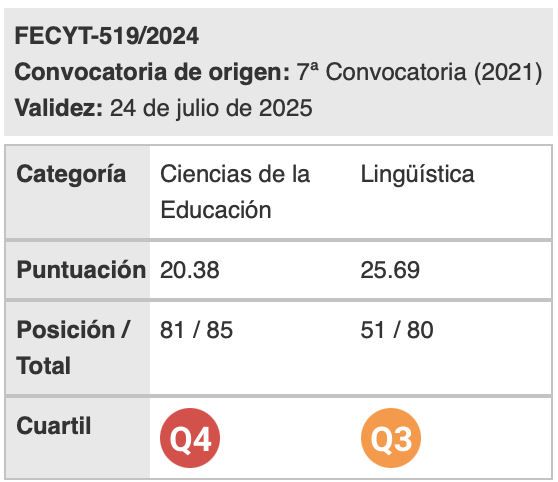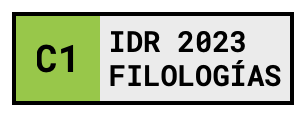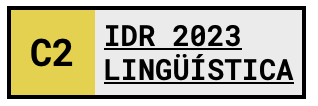Overlapping of ESP/EAP and content courses revisited
Palabras clave:
ESP/EAP courses vs. content courses, ESP practitioners, effective technical communicationResumen
This paper deals with some key issues in a controversial topic, that of the existing overlapping between ESP/EAP courses and simultaneously-run content courses. Some examples are provided and analyzed to be aware of the need of ESP/EAP practitioners to have a fairly deep knowledge of those technical matters they have to deal with in order to be as genuinely communicative as possible. later on, a list of principles for designing successful ESP/EAP courses is presented and justified. After putting into practice a communicative approach founded on those principles for a period of five years, the opinion of those students who have taken two ESP/EAP courses was gathered –an ad hoc questionnaire was developed for the purpose–. data are analyzed to hypothesize the long-run correlation between applying the above mentioned principles and the positive opinion of students on their teachers when those principles are applied at university level.
Descargas
Citas
Belcher, D. D. (2004). Trends in teaching English for specific purposes. Annual
Review of Applied Linguistic, 2, 165-186.
Berardo, S. A. (2006). The use of authentic materials in the teaching of reading.
The Reading Matrix, 6(2), 60-69.
Brewster, J. (1999). Teaching English through Content: Supporting Good Practice.
in C. Kennedy (Ed.), Innovation and Best Practice (83-95). New York, NY: longman. Crandall, J. (1998). Collaborate and Cooperate: Teacher Education for integrating
language and Content instruction. FORUM, 36(1), 2.
Crossley, S. A., Louwerse, M. M., McCarthy, P. M. and McNamara, D. S.
(2007). A linguistic analysis of simplified and authentic texts. The Modern Language Journal, 91(1), 15-30.
Dudley-Evans, T. and St John, M. J. (1998). Developments in English for Specific Purposes. A multi-disciplinary approach. Cambridge: Cambridge University Press.
Dudley-Evans, T. (2001). English for Specific Purposes. in R. Carter & d. Nunan (Eds.), The Cambridge Guide to Teaching English to Speakers of other Languages (131-136). Cambridge: Cambridge University Press.
Gilmore, A. (2004). A comparison of textbook and authentic interactions. ELT Journal, 58(4), 363-374.
Haley, M. H. and Austin, T. Y. (2004). Content-based second language teaching and learning. Boston, MA: Pearson education.
Harding, K. (2007). English for specific purposes. Oxford: Oxford University Press. Horwitz, E. K. (2008). Becoming a language teacher: a practical guide to second language
learning and teaching. Boston, MA: Pearson Education.
Jordan, R. R. (1997). English for Academic Purposes. A guide and resource book for
teachers. Cambridge: Cambridge University Press.
Kasper, L. F. (1997). The impact of content-based instructional programs on the academic progress of ESl students. English for Specific Purposes, 16(4), 309-320.
Kavaliauskiene, G. (2004). Research into the integration of content-based instruction into the ESP classroom. Journal of Language and Learning, 2(1), 1-12.
MacDonald, M. N., Badger, R. and Dasli, M. (2006). Authenticity, culture and language learning. Language and Intercultural Communication, 6, 1-12.
Mishan, F. (2005). Designing Authenticity into Language Learning Materials. Bristol: intellect.
Mitchell, R. and Myles, F. (2004). Second language learning theories (2nd ed.). london: Hodder Arnold.
Parkinson, J., Jackson, L., Kirkwood, T. and Padayachee, V. (2007). A scaffolded reading and writing course for foundation level science students. English for Specific Purposes, 26(4), 443-461.
Radu, M. E. and Nicoara, S. (2006). Offering Engineering degrees in a Foreign language – Preparing Engineers for a Global Experience. 9th International Conference on Engineering Education. San Juan, Puerto Rico, http://www.ineer.org/ Events/iCEE2006/papers/3434.pdf accessed April 10, 2012.
Shulman, L. (1987). Knowledge and teaching: Foundations of the new reform. Harvard Educational Review 57(1), 1-22.
Song, B. (2006). Content-based ESl instruction: long-term effects and outcomes. English for Specific Purposes, 25(4), 420-437.
Widdoson, H. G. (1993). Proper Words in Proper Places. ELT Journal, 47(4), 317-329.
Wu, H. and Badger, R. G. (2009). in a strange and uncharted land: ESP teachers’ strategies for dealing with unpredicted problems in subject knowledge during class. English for Specific Purposes, 28(1), 19-32.
Descargas
Publicado
Cómo citar
Número
Sección
Licencia
Aquellos autores/as que tengan publicaciones con esta revista, aceptan los términos siguientes:
- Los autores/as conservarán sus derechos de autor y garantizarán a la revista el derecho de primera publicación de su obra, el cuál estará simultáneamente sujeto a la Licencia de reconocimiento de Creative Commons que permite a terceros compartir la obra siempre que se indique su autor y su primera publicación esta revista.
- Los autores/as podrán adoptar otros acuerdos de licencia no exclusiva de distribución de la versión de la obra publicada (p. ej.: depositarla en un archivo telemático institucional o publicarla en un volumen monográfico) siempre que se indique la publicación inicial en esta revista.
- Se permite y recomienda a los autores/as difundir su obra a través de Internet (p. ej.: en archivos telemáticos institucionales o en su página web) antes y durante el proceso de envío, lo cual puede producir intercambios interesantes y aumentar las citas de la obra publicada. (Véase El efecto del acceso abierto).

Revista de Lenguas para fines específicos is licensed under a Creative Commons Reconocimiento-NoComercial-SinObraDerivada 4.0 Internacional License.






















